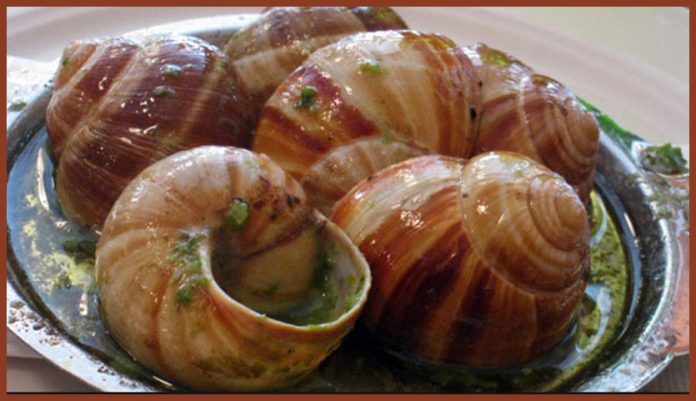Planning a trip to France? If so, you’re undoubtedly looking forward to some amazing French dishes. To be correct, the whole concept of gourmet cooking — haute cuisine originates in France. The ingenious methods, the elegant sauces, and the artistry of French chefs are known worldwide.
But if you’re interested in some adventurous dining, try the food features that locals love. These are the dishes that regular French people have been eating for centuries.
Most of them are made from things that wealthier people tossed out, so you might want to eat first and ask questions later!
Traditional French Cuisine to Try
Here are several cook guides to classic foods for your French culinary adventure.
1. Bulots
Let’s start out easy. Seafood dishes and fish dishes are popular in French food. You can buy bulots from street vendors in Paris and all the seaside towns in France.
Everybody has their recipe for cooking them, and they’re all delicious. You have to work the little bulot out of its pretty shell with a special little pick.
They taste like clams and are fun to eat, even as a light meal. Served with some lemon juice and iced water on a hot summer day, you’ll have a refreshing and satisfying piece of French cuisine.
2. Squab: The French Pigeon Dish
Another not-too-scary dish that makes our top 13 is the pigeon, which does not taste like chicken. The meat is rich and dark, with a delicate texture and an earthy flavor that makes it special. And who knows? You might already have eaten pigeon meat — in the U.S., it’s called squab.
If you want to venture into a pigeon recipe at home, there are actually plenty of ways to cook and season your bird. All you need is the pigeon breasts, some olive oil, and some flavors like cumin, garlic, and pepper. Prepare the oven for this one, as roasting is better than frying the meat in the frying pan.
3. Langue de Boeuf Fumée: Beef Tongue
Here’s one that you might not find in the cooking guides at home: translated, this is smoked ox tongue. Tongue is cooked in all kinds of ways all over the world. You know how good it is if you’ve already tried it barbequed or in a taco.
The flavor is much like a lesser cut of beef, but the texture is much smoother — and in the right hands, ox tongue can be so tender and sweet that it melts in your mouth.
You can get some incredibly fancy variations on this simple dish, including a luxurious Langue Lucullus at Benoit in Paris, where it’s stuffed with foie gras.
4. Tete de Veau: Calf’s Head
Ah, now we’re getting somewhere, especially if young pigeons didn’t scare you off. Tete de Veau is a seriously traditional dish. It’s made from parts of a calf’s head, boiled down, and composed into a single piece.
Tete de Veau is a little bit fatty and definitely gelatinous. The jelly-like texture and odd flavor might take a little getting used to — your best bet is to try it with a good sauce. It’s pictured here paired with a Gribiche sauce based on eggs, which is a great choice.
5. Ris de Veau: Sweetbread
Ris de Veau is made from the pancreas of a calf — in English-speaking countries, it’s called sweetbreads. The taste is mild, a little like bacon and the texture is silky and reminiscent of scallops. If you try organ meats, this is the place to start.
This is an ancient recipe that has (somehow) survived from Roman times. You should try it as it is an experience, but do yourself a favor and don’t overdo your research beforehand, or you may be scared off.
6. Tripes
Tripes (in English, tripe) is an animal stomach. In France, it’s most often veal belly. Soft and tender, tripes can be delicious, especially with a hefty serving of boiled potatoes.
For obvious reasons, make sure your tripes come out of a pristine kitchen prepared by a competent chef – you’ll easily find this dish at French restaurants.
7. Pieds de Cochon: Pig’s Feet
The pork-eating world has voted, and the decision is unanimous — there’s just about no part of a pig that isn’t scrumptious. As proof, try some Pieds de Cochon (pig’s feet) while you’re in France. They’re a little bit greasy and gelatinous, but let’s face it — so is bacon. And they’re also fatty, porky, and totally yummy.
The rich flavor is a lot like a ham hock; like ham hocks, they make a great addition to soups and stews. They are often served in recipes with vegetables like green beans and red wine.
8. Fromage de Tete: Head Cheese
Fromage de Tete is head cheese, and you may have run into it before if there’s a good deli near your home. Don’t be put off because it’s made from various goodies in and around a cow’s head. Fromage de Tete is awesome.
The texture is wobbly, like a firm Jello. It smells like high-quality bologna — and tastes like rich, spicy ham. Get past the odd texture, and you’re in for a real treat.
9. Boudin Noir: Blood Sausage
Boudin Noir is either blood sausage or blood pudding. The great British chefs might be reminded of something similar, and in France, it’s generally made with pork blood. They add many other ingredients— commonly onions, bacon or fatback, apples, parsley, egg, cream, and seasonings to hold it together.
You’ll often find Boudin Noir served on a plate with cooked apple and diced potato cooked with onion. This is a dish you’ll either love or hate. The texture is dense and somewhat gritty, and the flavor is rich and spicy with a strongly metallic aftertaste.
Boudin Noir is either blood sausage or blood pudding. The great British chefs might be reminded of something similar, and in France, it’s generally made with pork blood. They add many other ingredients— commonly onions, bacon or fatback, apples, parsley, egg, cream, and seasonings to hold it together.
You’ll often find Boudin Noir served on a plate with cooked apple and diced potato cooked with onion. This is a dish you’ll either love or hate. The texture is dense and somewhat gritty, and the flavor is rich and spicy with a strongly metallic aftertaste.
10. Andouillette
If you want to start an argument in France, ask two locals what they think of Andouillette. This controversial little sausage is another one of those love-it-or-hate-it dishes.
It’s made from tripe and chitterlings (intestines), usually pork or veal. If you’ve eaten and enjoyed chitterlings, give Andouillette a try.
The flavor is strong and earthy — and, like chitterlings, there’s a certain amount of smell involved in the preparation and consumption of Andouillettes. Definitely an acquired taste and certainly not for everyone.




























